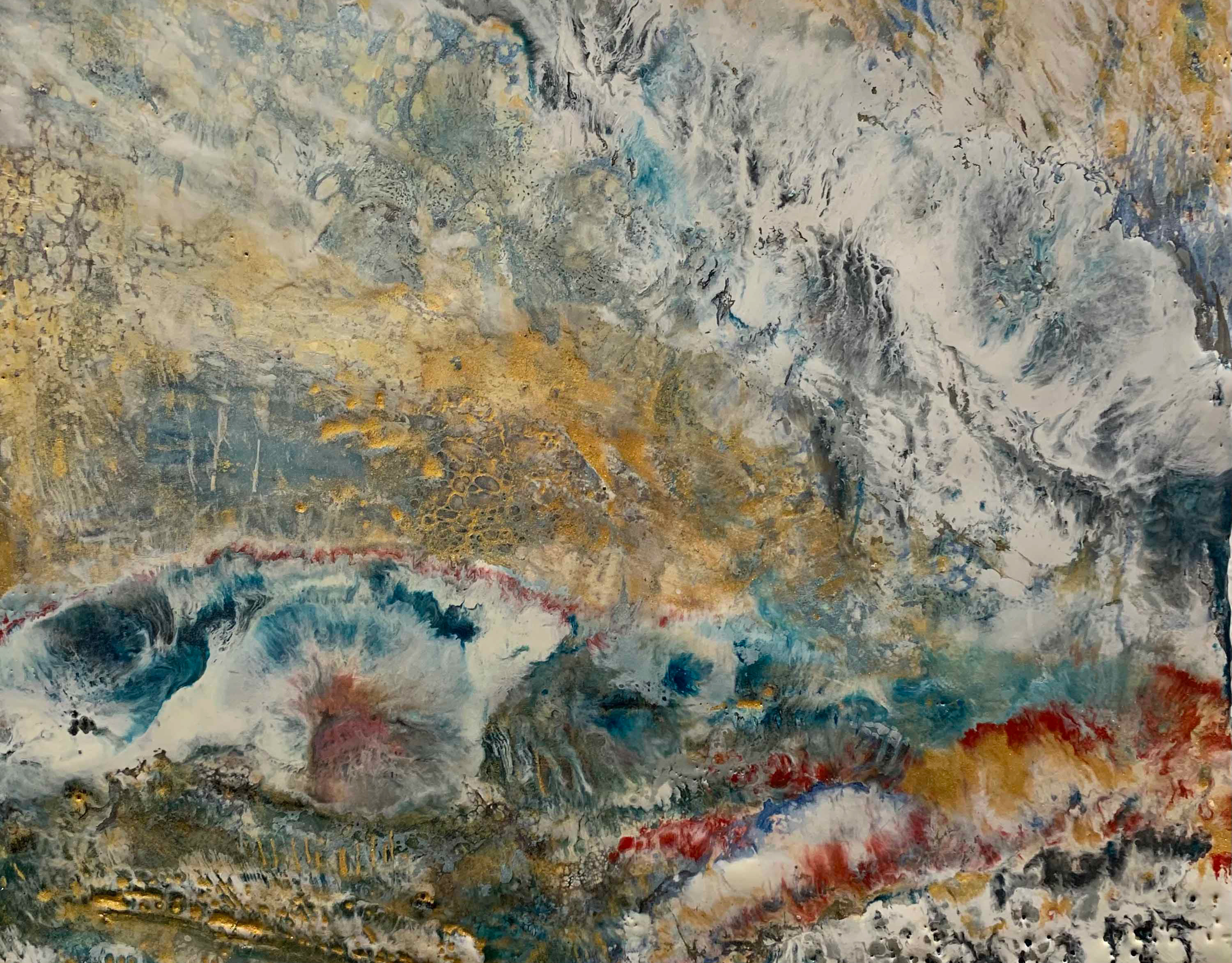About the Artist and Encaustic Studio
Working with seascape and landscape themes, Deborah Paulsen is inspired by the local scenery in Ventura, California, and other travels. The methods used with the encaustic paint create luminescent and sensual colors as the paint is applied and manipulated in a molten state. Fantastical shapes and textures are revealed through the processes. Layers of the encaustic medium are fused with a torch, allowing the colors to mix and marble, creating surreal effects as the layers are excavated with pottery tools. Elements of the land, such as rocky protrusions, are carved in as relief design elements.
Paulsen loves making encaustic paintings because they allow her to reflect on where she has been and bring it to the present. Working with encaustic paint is an alchemical and magical process full of surprises.
Paulsen loves making encaustic paintings because they allow her to reflect on where she has been and bring it to the present. Working with encaustic paint is an alchemical and magical process full of surprises.
Deborah Paulsen was born in Spokane, Washington, and lives North of Los Angeles in the small town of Fillmore, located in rural Ventura, CA. Paulsen holds a Master of Fine Arts from Claremont Graduate University and a Bachelor of Fine Arts from Eastern Washington University.
Over the last thirty years, Deborah Paulsen has exhibited her work in numerous venues, including the creation of site-specific installations. She has also collaborated with the Institute of Cultural Inquiry on projects such as Artist Edition: Searching for Sebald, The AIDS Chronicles, and The Manual of Lost Ideas, which were accepted into the archives at the Getty Research Institute.
Most recently, Paulsen has been exhibiting my work with the International Encaustic Artists, Cooperstown Art Association in Cooperstown, NY; the Encaustic Art Institute, Museum of Encaustic Art in Santa Fe, NM; and the Hillcrest Center for the Arts in Thousand Oaks, CA. In the fall of 2024, she had a solo show at Studio 99 in Ventura, CA.
https://linktr.ee/deborahrpaulsen
https://deborahpaulsen.art/
Instagram @deborahrpaulsen
@deborahpaulsen.bsky.social
https://deborahpaulsen.art/
Instagram @deborahrpaulsen
@deborahpaulsen.bsky.social
A Brief History of Encaustic Painting
Encaustic is a beeswax-based medium and technique that originated with the Ancient Greeks and was popular with Egyptian and Roman artists. The primary ingredients of encaustic are beeswax, and a tree gum called Damar Resin. Color pigments are added to the encaustic medium to form the paint. Encaustic is painted on a hard surface in hot molten form in layers and fused with heat to complete the process. The paint is durable and long-lasting when protected from extreme temperatures, as some of the world’s oldest painting examples are encaustic. Encaustics were revived in the 20th century by contemporary artists such as Jasper Johns and Lynda Benglis.
Encaustic is a beeswax-based medium and technique that originated with the Ancient Greeks and was popular with Egyptian and Roman artists. The primary ingredients of encaustic are beeswax, and a tree gum called Damar Resin. Color pigments are added to the encaustic medium to form the paint. Encaustic is painted on a hard surface in hot molten form in layers and fused with heat to complete the process. The paint is durable and long-lasting when protected from extreme temperatures, as some of the world’s oldest painting examples are encaustic. Encaustics were revived in the 20th century by contemporary artists such as Jasper Johns and Lynda Benglis.
